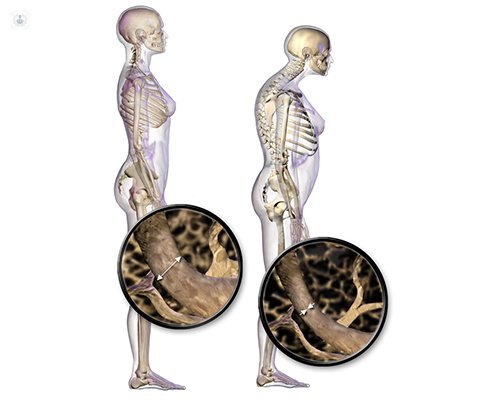Diagnosis of osteoporosis, the importance of knowing the risk of fracture
Written by:According to the official most accepted definition, osteoporosis is a generalized skeletal disease characterized by low bone mass and altered bone microarchitecture, with an increased brittleness of the same and thus, an increased risk of suffer fractures. This definition is important because it defines the disease as more than just bone mass. Therefore, it goes beyond bone densitometry, and sets the objective of the management and treatment, reduce the risk of fractures.
It is sometimes considered the most osteoporosis as a risk factor, which as a disease. Something similar happen with high blood pressure and the risk of myocardial infarction or stroke. Often, hypertension is not because of clinical manifestations, if not to prevent having a heart attack. With osteoporosis goes something like, specialists in rheumatology treat to reduce fracture risk, not just to improve the outcome of a test.
So osteoporosis is a decrease in fracture resistance, and this resistance depends on the density and bone quality.
Causes of Osteoporosis
Multiple factors that can cause loss of bone density, therefore, osteoporosis. These factors are divided into modifiable and non-modifiable.
Modifiable factors are the main cause of osteoporosis. Highlights include: smoking, alcoholism, low excessive weight, poor calcium diets and taking certain drugs (especially steroids).
On the other hand, non - modifiable factors are advanced and family history of osteoporosis or osteoporotic fracture age.

Osteoporosis: Diagnosis
The most commonly used in the diagnosis and monitoring of osteoporosis is densitometry test. Densitometry to determine the amount of bone mass, ie, calculates the bone density. In order to measure bone quality is necessary to perform a bone biopsy. Currently this test is not done in routine clinical practice, but they are developing alternatives.
As we have said what is really important is the risk of fracture. There are different indexes and questionnaires, based on bone densitometry and factors most important known risk for estimating the risk of fracture and thus to assess whether treatment should be done and what is the most appropriate.
Described almost a hundred risk factors although few really important. These include: previous fractures, low bone density, elderly, taking corticosteroids, inflammatory diseases and early menopause, among others.



